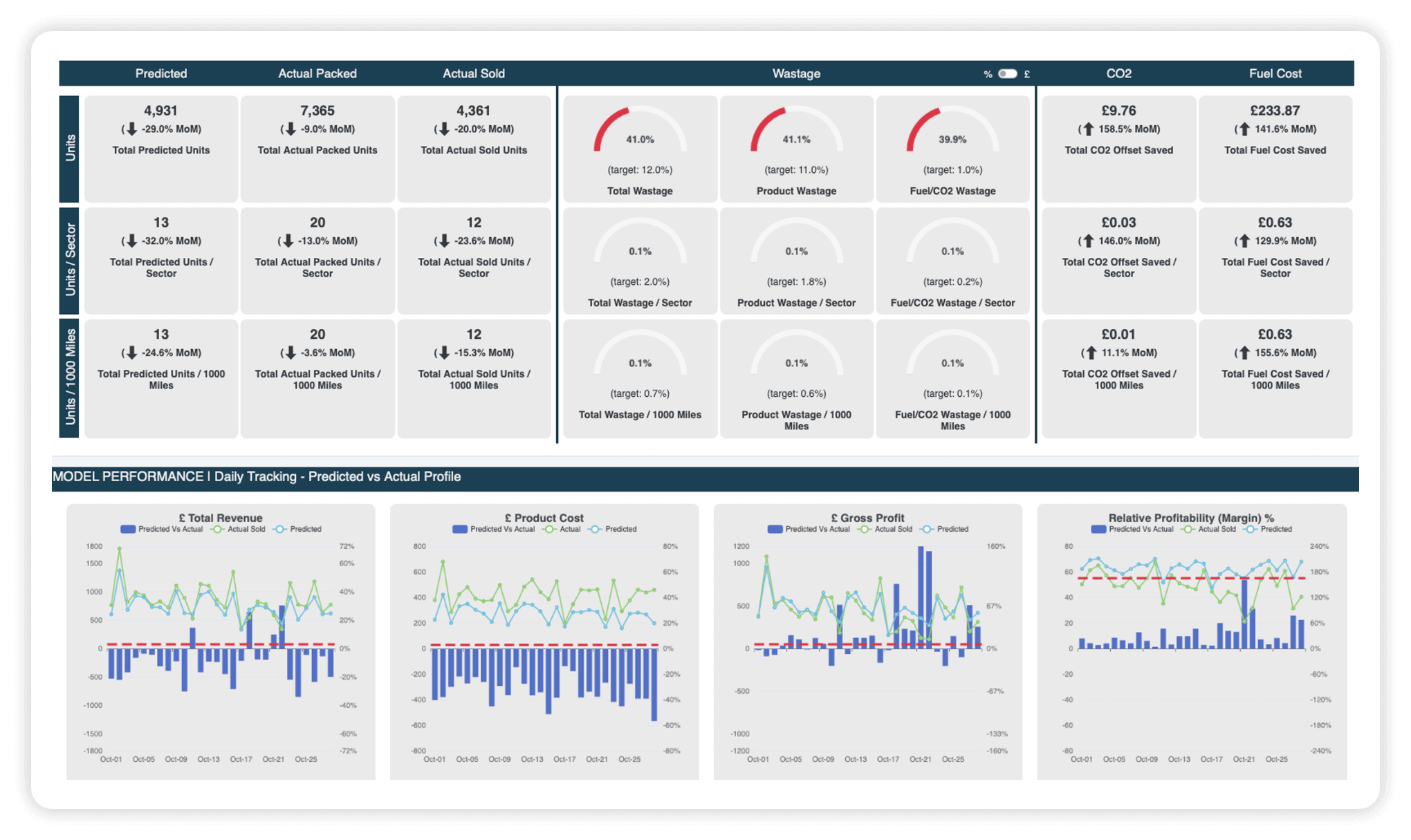How Airlines Can Leverage Data to Drive Sustainability and Profitability
11th March 2025
The aviation industry is at a turning point. Rising fuel costs, unpredictable demand, and increasing pressure to reduce carbon emissions make balancing profitability and sustainability more challenging than ever.
With aviation responsible for 2.5% of global carbon emissions (IATA), airlines must find smarter ways to reduce their environmental impact – without compromising financial performance. The good news? Data-driven strategies are already helping leading airlines streamline operations, enhance the passenger experience, and cut costs while significantly reducing their carbon footprint.
The industry is taking notice. Global AI adoption in aviation is set to soar from $152.4 million in 2018 to $2.2 billion by 2025 – a clear sign that data-driven decision-making is shaping the future of air travel.
The In-Flight Catering Challenge: A Multi-Billion Dollar Opportunity
The global airline catering market is set to grow from $12.8 billion in 2022 to $16.4 billion by 2028. Yet, food waste remains one of the industry’s biggest hidden inefficiencies. Passengers demand better meal choices, yet airlines often overstock, leading to millions of uneaten meals discarded each year.
That’s where data-driven innovation makes all the difference.

How Airlines Can Cut Waste & Increase Revenue with Technology
Predict Demand with Precision – Forecast food, drink, and retail needs for each flight, cutting surplus stock without disappointing passengers, while reducing emissions and fuel burn.

Pre-Ordering to Minimise Waste – Allowing passengers to pre-order makes planning onboard demand even more predictable, guarantees passengers their first choice and speeds up onboard service, reducing the requirement to take payments for pre-ordered items.
Passenger Personalisation – With a better understanding of what customers want airlines can offer highly targeted in-flight retail options, driving sales without increasing waste.
Streamline Supply Chains – Optimisation of product sourcing and stock based on forecast demand and sales to reduce overstocking and ensure product availability.

Sustainability & Profitability: Airlines Can Have Both
Sustainability isn’t just good for the planet—it’s a fundamental business strategy that directly impacts an airline’s bottom line. As governments impose stricter regulations and consumers demand greener travel options, airlines that fail to adapt risk financial penalties and reputational damage.
By 2025, sustainable aviation fuel (SAF) usage is expected to increase significantly, with the EU requiring a 2% SAF blend at all airports, rising to 6% by 2030 and 70% by 2050. Similarly, in the U.S., states like California and Illinois are implementing Low Carbon Fuel Standards (LCFS) to incentivize SAF production, while Nebraska has introduced tax credits for SAF that reduces emissions by at least 50% .
Beyond fuel, waste reduction is a major opportunity. The airline industry discards more than 5.7 million tons of cabin waste annually, with food waste alone contributing $3.9 billion in lost revenue every year. At the same time, research shows that passengers are increasingly eco-conscious, with over 70% of travelers stating they prefer airlines that actively work to reduce their environmental impact .
Forward-thinking airlines are already leveraging data-driven solutions to align sustainability with profitability. Those that embrace this shift won’t just reduce their environmental footprint—they’ll build stronger brands, unlock new revenue streams, and future-proof their operations in a rapidly evolving industry. With solutions like our Dynamic Bar system, airlines can optimise catering loads in real-time, ensuring they carry exactly what’s needed—no more, no less.

Smarter Operations, Powered by Data
At Data Clarity, we help airlines turn data into action, ensuring they stay ahead in an evolving industry. By integrating AI-driven analytics, airlines can make faster, smarter decisions – aligning profitability with sustainability.
Let’s start a conversation. How is your airline tackling these challenges? Let’s explore how data can drive real impact
